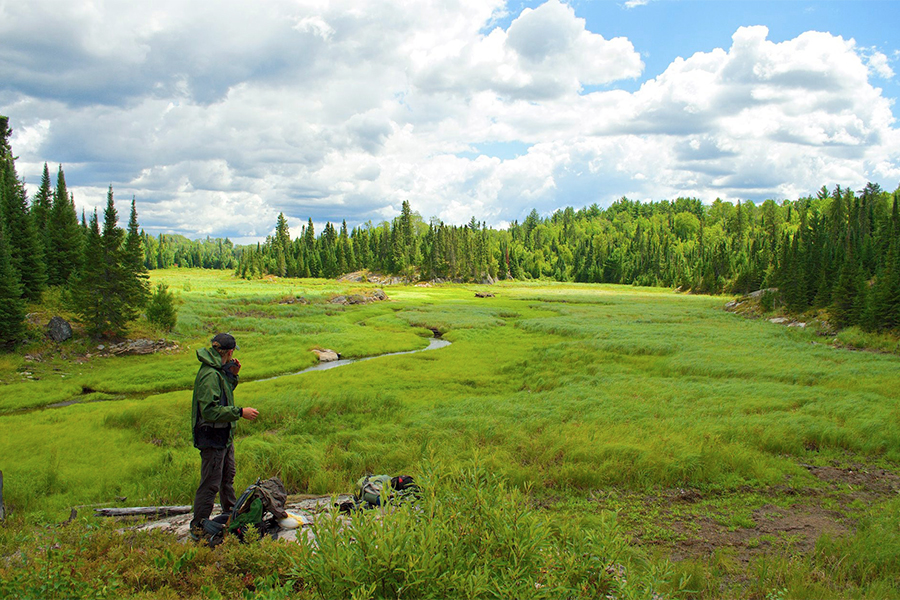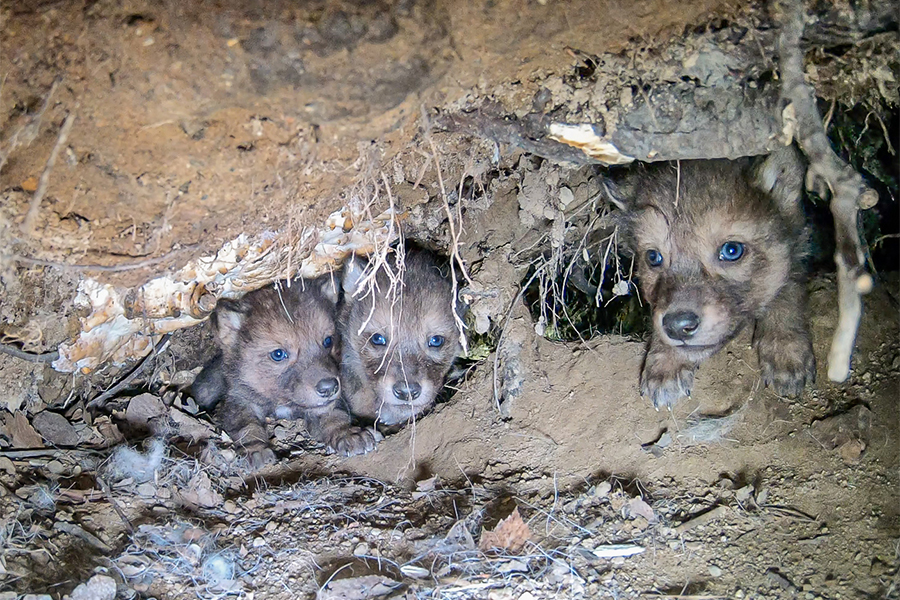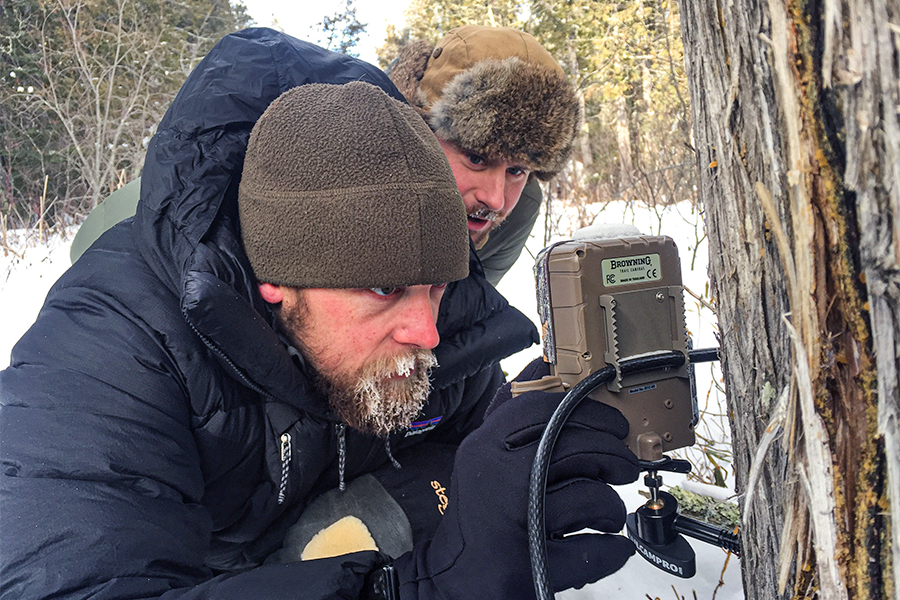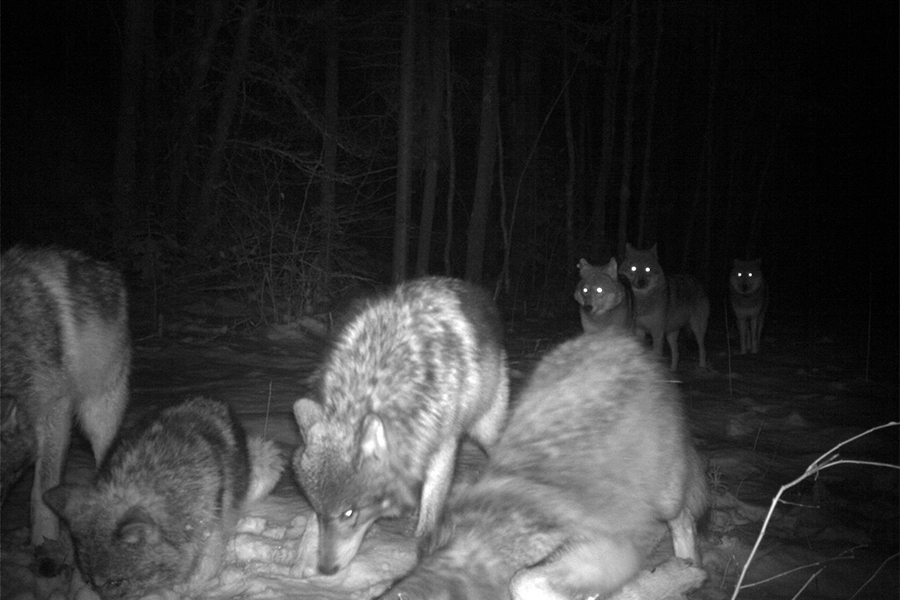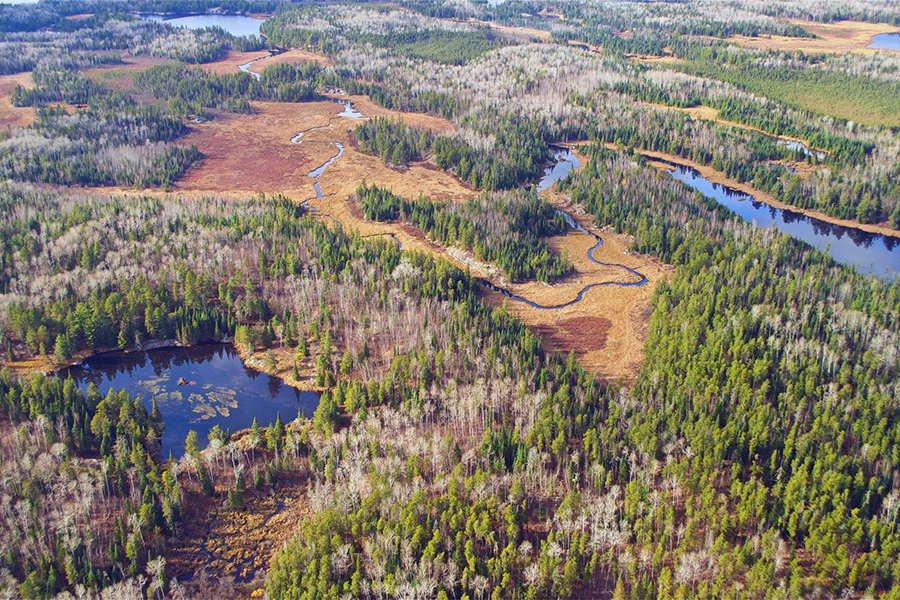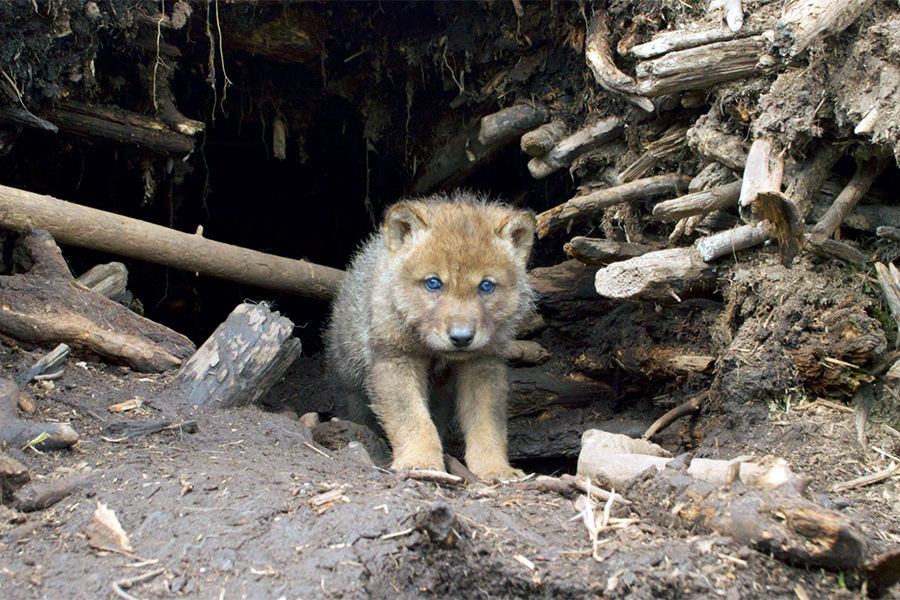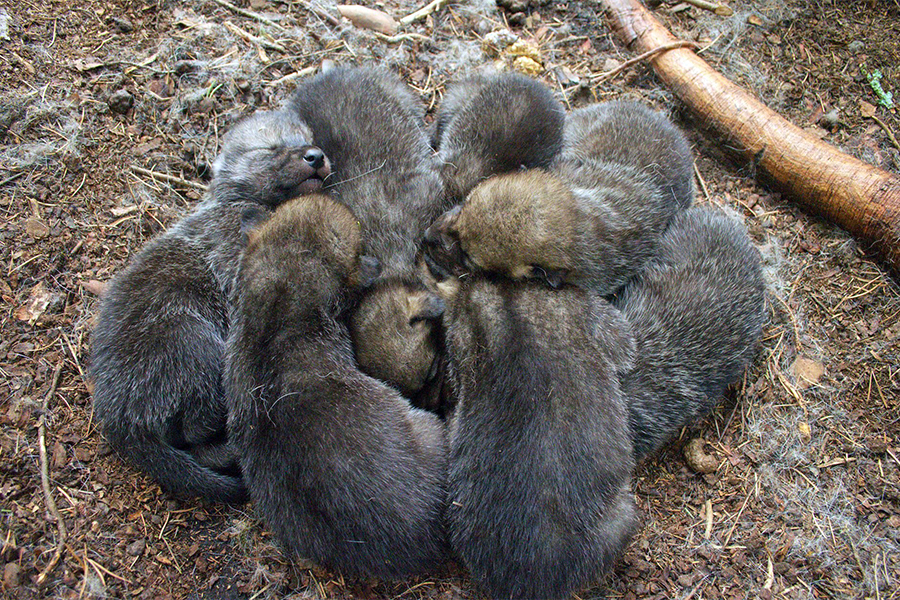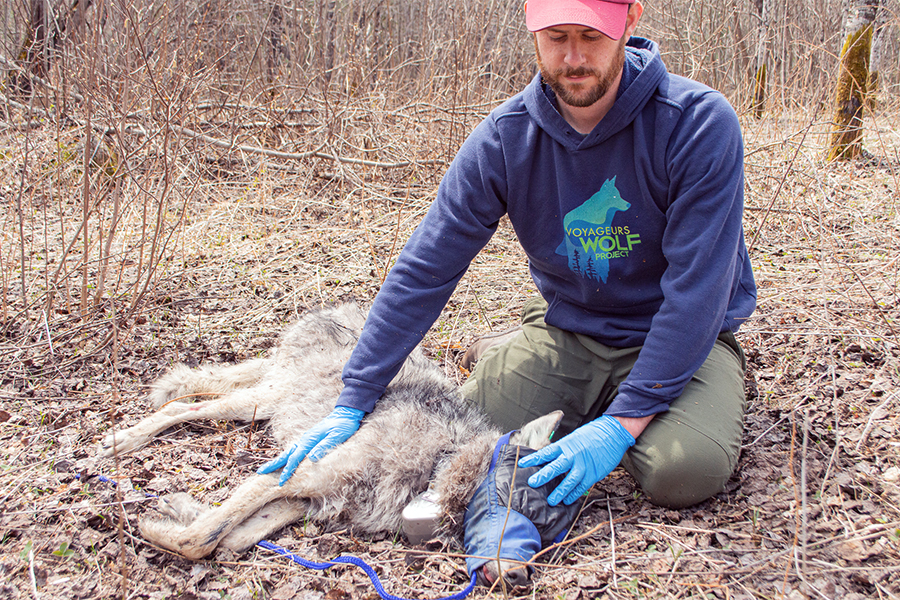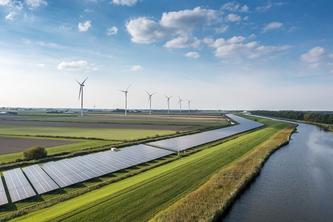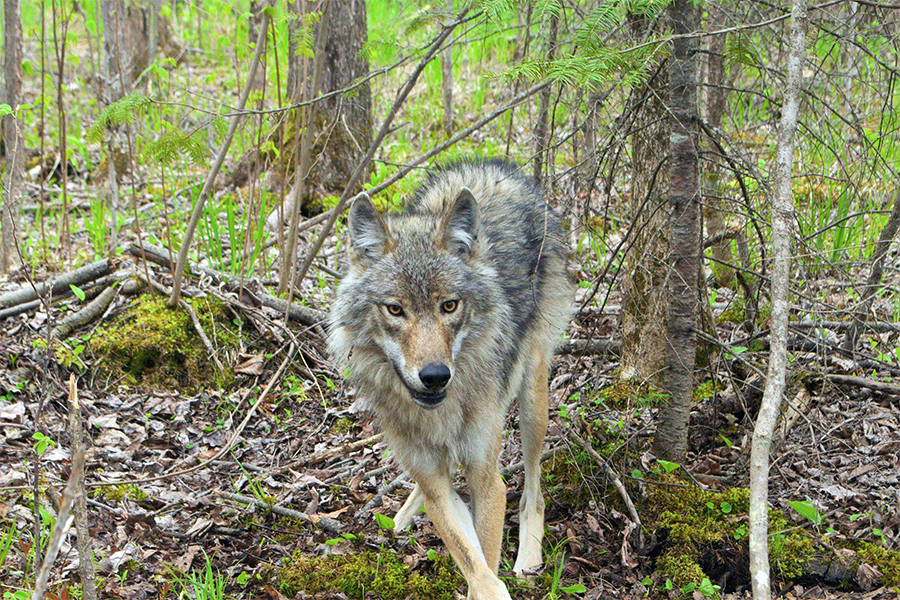
It’s not every day that the work of researchers at academic institutions grabs the media spotlight, but it turns out that the antics of wolf pups are hard to resist, especially in the age of social media. The occasional cameo by bears, beavers, bobcats, moose, and other animals of northern Minnesota doesn’t hurt either.
University of Minnesota researchers with the Voyageurs Wolf Project at Voyageurs National Park in northern Minnesota have inadvertently made celebrities out of wolves and other rarely seen wild animals in this breathtaking part of the state.
The Voyageurs Wolf Project research initiative launched in 2015 in an effort to address knowledge gaps in wolf ecology. By gathering detailed information on both the reproductive ecology and predation behavior of wolves, the researchers are able to connect critical facets of wolf behavior to important ecological factors, prey, and human interactions.
“Wolves have important biological roles directly influencing prey populations and indirectly influencing forests, wetlands, and wildlife disease,” says U of M Fisheries, Wildlife and Conservation Biology associate professor and project member Joseph Bump.
Because wolves are elusive predators, the team relies on GPS- and camera-collars, remote video cameras, and long hours in the field to collect the information they need to better understand how wolves live. For the first few years of the project, the team relied on more traditional methods of field research, often without actually seeing the animals.
“We've been very fortunate that there's been a lot of technology that's allowed us to share aspects of wolf ecology that just weren't possible in the past,” says researcher and project member Tom Gable. “Researchers have struggled to understand many aspects of wolves for a long time because studying and keeping track of wolves in densely forested places like Minnesota without these tools is incredibly challenging.”
Gable estimates the small team has visited more than 21,000 areas where wolves have spent more than 20-min over the past seven years, hiking more than 32,000 miles to get to those locations—about 30,000 hours of fieldwork.
A side effect of the technology has been unprecedented footage of wolves in the wild, something that has been a hit on social media. Some of the footage the team has posted to its channels on YouTube, Facebook, Twitter, and Instagram has been viewed millions of times, leading to news coverage from Popular Science, Smithsonian magazine, National Geographic, The New York Times, and dozens of other publications.
“I don't think we ever envisioned it to become what it's become, in the sense of the size of the following,” says Gable. “But clearly people think wolves are very charismatic.”
Joseph Bump explains the success another way: “People love wolves and people hate wolves, which results in broad, strong interest. We try to let the videos, photos, and patterns in the data we collect lead the way.”
The team also shares its data with the National Park Service and the Minnesota Department of Natural Resources, as well as with nearly two dozen other researchers across the globe, from academics to tribal nations to curious individuals. International wolf experts have described the initial results of the research as a breakthrough—an unparalleled opportunity to gather novel information on how wolves hunt beavers and how that shapes wetlands in southern boreal ecosystems.
Some of the footage includes the first ever camera collar footage from a wild wolf (1.1M views), the first ever fishing behavior recorded of a wolf, and the first howling attempts of a wolf pup (1.4M views). The posts are always written in an approachable, informative, and even humorous style—as in the video footage of “the fattest bear we have ever seen”—entertaining and educating the audience.
“We're not just doing research, we're also doing a lot of outreach and education as well,” says Gable. “We've had a lot of requests from teachers who want us to develop educational materials for schools. … We just don't have the bandwidth.”
Gable says the increased publicity has allowed kids to get a look at what the job entails. Lately, that’s a lot more social media—including responding to hundreds of questions and comments each week.
“I think there's something nice about it, because I think most of the time, the public doesn't feel like they have access to experts in this way,” says Gable.
Still, the project team thinks the extra effort is worth it.
“If people occasionally consider the lives of wolves in a little more detail as a result of our social media, that has value,” says Bump. “The social media presence also generates regular interest from film companies and that is positive for wolves, good for our science, and contributes to the local economy in the Voyageurs area."
“It also just makes northern Minnesota look cool,” adds Gable. “We've got these awesome resources. … But it's not like Yellowstone where you can go out and just drive around.”
Read more about the science behind the Voyageurs Wolf Project in the story "CFANS Good Vibes: Raised by wolves."
- Categories:
- Agriculture and Environment
